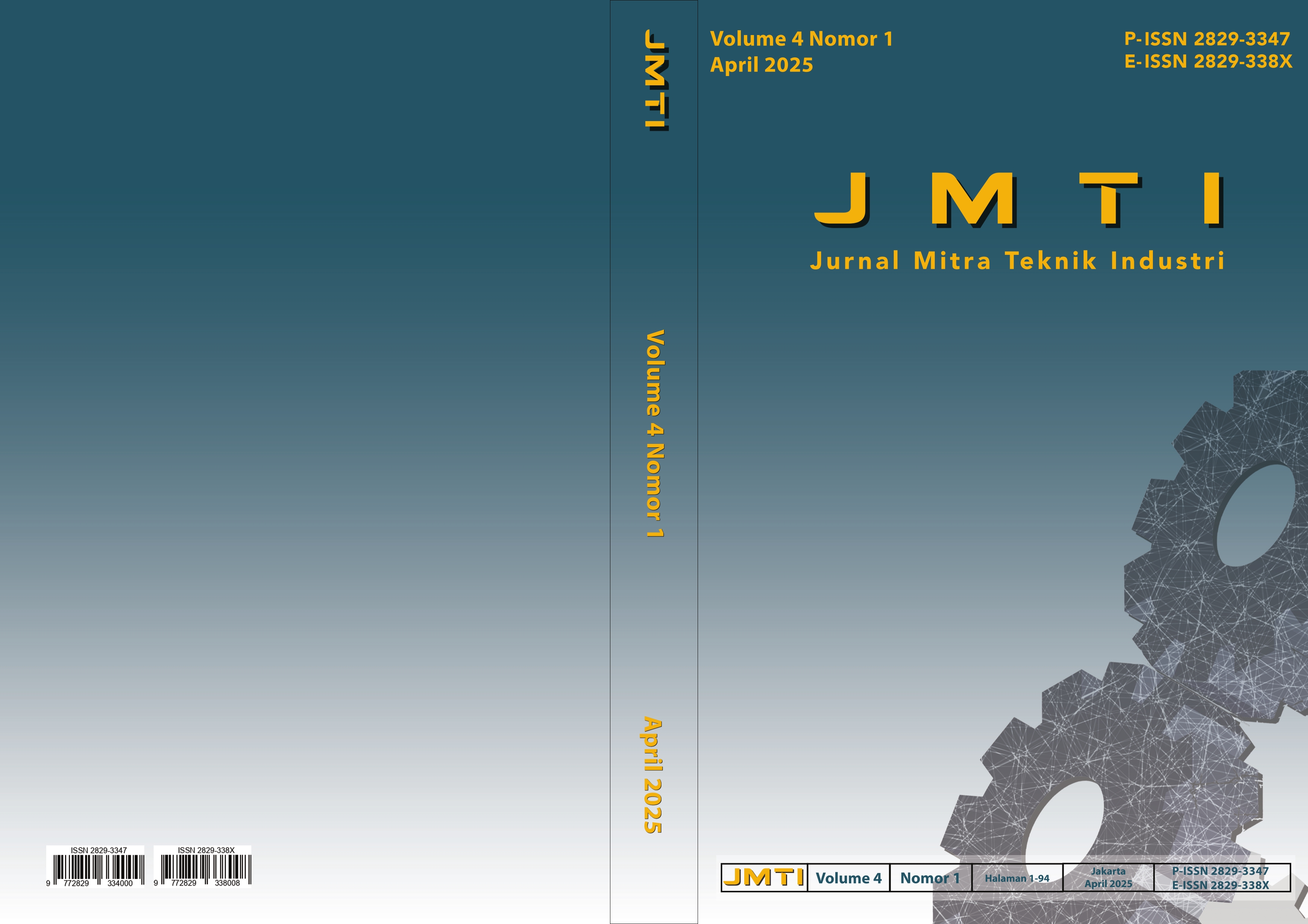PENDEKATAN GREEN SUPPLY CHAIN MANAGEMENT UNTUK PENGUKURAN KINERJA RANTAI PASOK HIJAU PADA PERUSAHAAN PRODUKSI ALAT RUMAH TANGGA PLASTIK
Isi Artikel Utama
Abstrak
This study focuses on evaluating green supply chain performance within a plastic-based household product manufacturer, specifically in the production of drinking glasses. Data collection involved questionnaires and interviews with company representatives. Findings from the interviews revealed a primary challenge in accurately forecasting sales demand, creating uncertainties in production and storage and often leading to overstock or stockouts, both of which negatively affect customer satisfaction. Over the last six months, significant discrepancies between forecasted and actual demand were recorded, with differences of 92, 90, 84, 37, 74, and 80 cartons respectively. To address these issues, the research applies a Green Supply Chain Management (GSCM) approach using the Green Supply Chain Operations Reference (GSCOR) model, alongside Key Performance Indicators (KPI), the Analytical Hierarchy Process (AHP), the Objective Matrix (OMAX), and the Traffic Light System (TLS). KPIs are measured across five core processes: plan, source, make, deliver, and return. This study aims to improve forecast accuracy, support the implementation of more effective and efficient strategies, and assess the extent of the company's environmental sustainability practices, ultimately contributing to better environmental practices within the organization.
Rincian Artikel

Artikel ini berlisensiCreative Commons Attribution-NonCommercial-ShareAlike 4.0 International License.
Referensi
[1] D.T. Liputra, S. Santoso, and N.A. Susanto, ”Pengukuran Kinerja Rantai Pasok Dengan Model Supply Chain Operations Reference (SCOR) dan Metode Perbandingan Berpasangan,” Jurnal Rekayasa Sistem Industri, vol. 7, no. 2, pp. 119-125, 2018.
[2] B. Sundarakani, R. de Souza, M. Goh, D.V. Over, S. Manikandan, and S.C.L. Koh, “A Sustainable Green Supply Chain For Globally Integrated Networks,” Enterprise Networks and Logistics for Agil,e Manufacturing, pp. 191-206, 2020.
[3] H. Purnomo, A. Kisanjani, W.I. Kurnia and S. Suwarto, “Pengukuran Kinerja Green Supply Chain Management Pada Industri Penyamakan Kulit Yogyakarta,” Jurnal Ilmiah Teknik Industri, vol. 18, no. 2, pp. 161-169, 2019.
[4] D.C. Puspitasari, and F. Pulansari, “Analisis Pengukuran Kinerja Green SCM Menggunakan Metode Green SCOR Berbasis ANP Serta OMAX (Studi Kasus: Industri Makanan),” Agrointek, vol. 17, no. 1, pp. 1-10, 2023.
[5] C. Santoso, W. Kosasih, and M.A. Saryatmo, “Pengukuran Kinerja Manajemen Rantai Pasok Pada PT. XYZ Dengan Pendekatan Metode Supply Chain Operations Reference (SCOR),” Jurnal Mitra Teknik Industri, vol. 1, no. 1, pp. 35-46, 2022.
[6] D. Parmenter, in Key Performance Indicators: Developing, Implementing, and Using Winning KPIs, 3rd ed., Wiley, 2015.
[7] T.L. Saaty, and L.G. Vargas, in Models, Methods, Concepts & Applications of The Analytic Hierarchy Process, 2nd ed., RWS Publications,2012.
[8] T.L. Saaty, in Fundamentals of Decision Making And Priority Theory, USA, 1994.
[9] A.R. Maulidah, and Y. Utomo, “Penerapan Metode Objective Matrix (OMAX) Dalam Mengukur Produktivitas (Studi Kasus: Departemen Servis PT. Tri Mitra Lestari),” Jurnal Teknik Industri, vol. 9, no. 2, pp. 371-378, 2023.
[10] M.R. Subhan, A. Profita, and D. Widada, “Perancangan dan Pengukuran Kinerja Rantai Pasok Industri Amplang (Studi Kasus: UD. Taufik Jaya Makmur, Samarinda),” Profisiensi, vol. 10, no. 1, pp. 17-29, 2022.
[11] J. Budhiawan, E. Rimawan, J.G. Ganap, and E. Mayasari, “Productivity Analysis Using Objective Matrix (OMAX) and Five Whys Analysis Methods on Rubber Powder Production Line at Pt Tiga Bintang Gautama,” International Journal of Innovative Science and Research Technology, vol. 6, no. 8, pp. 1216-1223, 2021.



